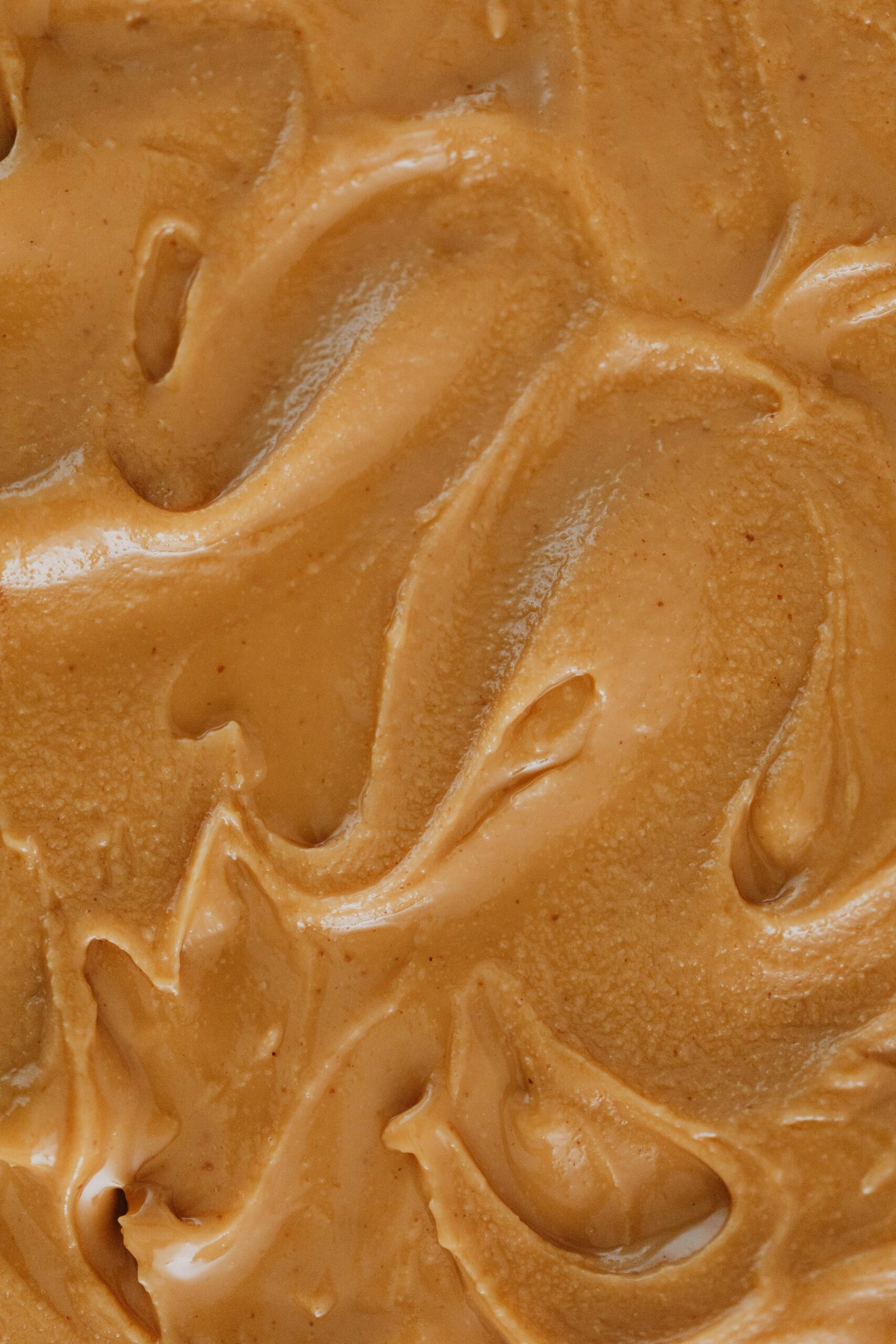Peanut Butter Price In Pakistan: Why Is It Rising Rapidly? If you have been shopping recently, you might have noticed the peanut butter price in Pakistan going up sharply. But what’s causing this sudden surge? Is it just inflation, or are there hidden factors behind this steep rise? In this article, we dive deep into the reasons why peanut butter prices in Pakistan are skyrocketing and what it means for consumers and businesses alike. You’ll discover the surprising elements affecting the cost of this popular spread and how it’s impacting everyday households.
The rapid increase in peanut butter price in Pakistan has left many buyers scratching their heads. With peanut butter being a staple in many Pakistani homes, especially for kids and health enthusiasts, this price hike is raising concern. But have you ever wondered what drives the price of peanut butter in the local market? From fluctuating raw peanut costs to supply chain disruptions and import challenges, several factors contribute to this trend. Plus, the recent global economic shifts and local agricultural challenges add fuel to the fire, making the cost of peanut butter in Pakistan even more unpredictable.
Moreover, the impact of rising peanut butter prices extends beyond just your kitchen shelf. Retailers, manufacturers, and even importers are feeling the pressure, which might lead to changes in product availability or quality. Are cheaper alternatives becoming more popular? Or will consumers simply bear the burden of higher prices? Stay tuned as we unravel the complex web behind the soaring peanut butter price in Pakistan and offer insights on what might happen next in this evolving market.
Top 5 Reasons Behind the Rapid Rise of Peanut Butter Price in Pakistan in 2024
Peanut butter has become a staple in many Pakistani households, loved for its rich taste and nutritional value. However, the year 2024 has seen an unexpected surge in the peanut butter price in Pakistan, leaving many consumers puzzled and concerned. Why is it rising rapidly? What factors are driving this price increase? Let’s explore the top 5 reasons behind this sudden hike, and try to understand the bigger picture affecting peanut butter affordability in the country.
1. Increase in Raw Peanut Prices
One of the main reasons behind the rising peanut butter price in Pakistan is the sharp increase in raw peanut costs. Peanuts are the primary ingredient in peanut butter, so any fluctuation in their market price directly affects the final product. This year, peanut prices have went up due to several issues:
- Unfavorable weather conditions such as droughts and irregular rainfall patterns in peanut-growing regions reduced the crop yield.
- Limited supply combined with higher demand both domestically and internationally caused peanuts to become more expensive.
- Inflation and rising fuel prices boosted transportation costs, indirectly pushing peanut prices upwards.
For example, in 2023, peanut prices were roughly 15% lower compared to the current rates, making peanut butter production more affordable for manufacturers.
2. Increased Production Costs for Manufacturers
Another significant factor is the rising production expenses faced by peanut butter companies. These costs include labor, packaging, electricity, and machinery maintenance, all of which have seen inflationary pressures this year. The production line requires energy, and with Pakistan’s ongoing energy crisis, electricity costs are soaring unpredictably.
Packaging material prices, such as plastic jars and labels, also increased sharply due to global supply chain disruptions and import tariffs. This makes it more costly for producers to package and distribute peanut butter efficiently.
Below is a simple comparison of estimated cost increases for manufacturers in 2023 vs 2024:
| Cost Component | 2023 Cost (PKR) | 2024 Cost (PKR) | % Increase |
|---|---|---|---|
| Raw Peanuts (per kg) | 300 | 360 | 20% |
| Packaging (per unit) | 25 | 35 | 40% |
| Electricity (monthly) | 50,000 | 75,000 | 50% |
| Labor (monthly) | 100,000 | 115,000 | 15% |
These rising costs force manufacturers to increase the retail price of peanut butter to maintain profitability.
3. Import Restrictions and Currency Devaluation
Pakistan relies on some imported ingredients and packaging materials for peanut butter production. Recent government policies have introduced stricter import restrictions on non-essential goods to conserve foreign currency reserves. This led to delays and higher costs in acquiring raw materials from abroad.
Moreover, the Pakistani Rupee has faced continuous devaluation against major currencies like the US Dollar. This means that importing anything has become more expensive in local currency terms, adding another layer of cost pressure on peanut butter producers.
This combination of import hurdles and currency weakness makes it difficult for companies to keep prices stable, resulting in higher costs passed on to consumers.
4. Growing Demand for Peanut Butter in Pakistan
An interesting but important reason why peanut butter price in Pakistan is rising rapidly is the growing demand for this product. Peanut butter is becoming more popular among health-conscious consumers, fitness enthusiasts, and children alike. It’s seen as a nutritious snack rich in protein, healthy fats, and vitamins.
- Urban areas, especially Karachi and Lahore, show increasing consumption trends.
- More supermarkets and online stores are stocking a wider variety of peanut butter brands.
- Export opportunities to neighboring countries have also increased demand.
With demand rising faster than supply, prices naturally move upwards. This supply-demand imbalance is a classic economic scenario that we see playing out in the peanut butter market today.
5. Inflation and Economic Challenges Affecting Consumer Goods
Finally, the overall inflation in Pakistan’s economy is a major contributor to the rising peanut butter price. Inflation affects nearly every sector—food, transportation, utilities, and more. Prices of commodities have increased sharply over the last few years, and peanut butter is no exception.
Economic instability, rising oil prices, and increased taxes on consumer goods all pile up to squeeze the middle-class budget. Peanut butter, once considered an affordable luxury, is now becoming costlier for average families.
To put it simply, if inflation is at around 12-15% annually, then consumer goods like peanut butter will see similar price increases unless offset by subsidies or price controls—which currently do not exist for this product.
Summary Table: Top 5 Reasons Behind Peanut Butter Price Increase in Pakistan (2024)
| Reason | Explanation |
|---|---|
| Raw Peanut Price Increase | Poor harvest and high demand raised peanut costs |
| Higher Production Costs | Energy, labor, packaging expenses increased |
How Inflation and Import Costs Are Driving Peanut Butter Prices Up in Pakistan
In Pakistan, peanut butter has become a popular pantry item, especially among urban families and health-conscious consumers. But lately, many shoppers are noticing one thing — the peanut butter price in Pakistan is rising rapidly. This trend is not just a random fluctuation but a result of complex economic factors. How inflation and import costs are driving peanut butter prices up in Pakistan is a question that many people ask. Let’s break down why this is happening and what it means for consumers.
Why Peanut Butter Price In Pakistan Is Increasing Fast?
The price of peanut butter in Pakistan has been on an upward curve for several months, and it is not expected to slow down soon. The main reasons behind this price surge are inflation and rising import costs. Pakistan imports a significant portion of its peanuts and peanut butter ingredients, so any increase in global prices affects the local market directly.
Inflation in Pakistan has been rising steadily over the past few years, driven by factors such as currency devaluation, political instability, and global economic pressures. When inflation rises, the cost of production and transportation for goods also increase. This means peanut butter manufacturers have to pay more for raw materials, packaging, and shipping.
The Role Of Import Costs
Pakistan doesn’t grow enough peanuts domestically to meet the demand, so it relies heavily on imports from countries like India, China, and the United States. The import costs include customs duties, shipping fees, and taxes, all of which have gone higher.
Some key points about import costs:
- Currency Depreciation: The Pakistani Rupee has lost value against the US Dollar, making imports more expensive.
- Shipping Delays: Due to global supply chain disruptions, shipping times have increased, which raises costs.
- Higher Customs Duties: The government has increased tariffs on some imported goods to protect local producers, but this also raises prices for consumers.
- Fuel Price Increase: Rising fuel prices worldwide have led to higher logistics costs.
Historical Context Of Peanut Butter Prices In Pakistan
Peanut butter was not traditionally a staple in Pakistani households. It gained popularity only in the last decade as people became more health-conscious and western food trends entered the market. Initially, peanut butter was considered a luxury item because it was mostly imported and priced high. Over time, local manufacturers started producing peanut butter, which made it more accessible and affordable.
However, recent years have shown a reversal in price trends. After a period of relative stability, prices started climbing sharply since 2022, coinciding with the global inflation surge and pandemic-related supply chain issues. This situation has made peanut butter less affordable for many middle-class families.
Comparison: Peanut Butter Price Then Vs Now
| Year | Average Price Per 500g Jar (PKR) | Notes |
|---|---|---|
| 2015 | 400 | Mostly imported, considered premium item |
| 2018 | 600 | Local production begins, prices stabilize |
| 2021 | 750 | Inflation and supply chain disruptions |
| 2023 | 1200 | Sharp increase due to inflation & imports |
This table shows how peanut butter prices have nearly doubled in just two years, which is a significant jump for a common household item.
Impact On Consumers
For Pakistani consumers, rising peanut butter prices mean having to either pay more or switch to alternatives. Peanut butter is often used as a protein-rich spread for children and adults, and its affordability plays a big role in diet choices. Higher prices can lead to:
- Reduced consumption of peanut butter, impacting nutrition intake.
- Increased demand for cheaper alternatives like jam or margarine.
- Pressure on local manufacturers who might not be able to absorb the increased costs.
Practical Examples: How Families Are Reacting
Consider a typical middle-class family in Karachi. Previously, a jar of peanut butter costing PKR 750 was a manageable expense. Now, with the price at PKR 1200, they might decide to buy smaller quantities or skip it altogether. Many families are looking for budget-friendly options or switching to homemade peanut butter if they can obtain raw peanuts at a cheaper rate.
What Could Help Stabilize Peanut Butter Prices?
Several measures could help ease the pressure on peanut butter prices in Pakistan:
- Boosting Local Peanut Production: Encouraging farmers to grow more peanuts would reduce reliance on imports.
- Reducing Import Tariffs: Lowering customs duties on peanuts and related products could decrease import costs.
- Improving Supply Chains: Upgrading logistics infrastructure to reduce delays and costs.
- Government Subsidies: Offering subsidies to local manufacturers to absorb part of the inflation impacts.
Summary Of Key Factors Driving Peanut Butter Price In Pakistan
- Inflation causing overall price increases.
- Currency depreciation making imports costly.
- Higher customs duties and taxes on imported ingredients.
- Global supply chain disruptions affecting shipping.
- Rising fuel and logistics costs impacting production.
The combination of
Is Peanut Butter Becoming a Luxury? Exploring Price Trends in Pakistan’s Market
Is Peanut Butter Becoming a Luxury? Exploring Price Trends in Pakistan’s Market
Peanut butter, once considered a simple and affordable spread, now seems to be climbing the ladder of luxury items in Pakistan. Many people wonder why peanut butter price in Pakistan is rising rapidly and whether this staple is becoming out of reach for average consumers. This article tries to understand the price trends of peanut butter in local markets, the factors behind its increasing cost, and what this means for everyday users.
Rising Peanut Butter Prices in Pakistan: What’s Going On?
In recent years, peanut butter price in Pakistan has seen an unusual hike. From a modest price point a few years back, this product is now selling at higher rates in supermarkets and grocery stores across the country. There are several reasons contributing to this upward trend, including supply chain disruptions, increased raw material prices, and growing demand.
Some key reasons for peanut butter price rise include:
- Increase in peanut crop cost: Peanut farming cost has increased due to higher fertilizer and pesticide prices.
- Import duties and taxes: Many peanut butter brands rely on imported peanuts or ingredients, and tariffs add to the retail price.
- Supply chain challenges: Transportation and logistics problems cause delays and increase overall costs.
- Growing demand: More people, especially younger generations, developing a taste for peanut butter drives up demand.
- Currency depreciation: Rupee losing value against dollar makes imported products costlier.
A Brief History of Peanut Butter in Pakistan
Peanut butter was not traditionally a common item in Pakistani households. It started gaining popularity in the 2000s with the rise of global food brands and changing food habits. Initially, peanut butter was seen as an exotic or imported product, mostly available in high-end supermarkets.
With time, local manufacturers began producing peanut butter, making it more accessible. However, despite local production, the cost of peanuts themselves have been increasing steadily. Pakistan, being a peanut-producing country, should ideally have lower prices but due to inefficiencies in agriculture and market structures, the benefits have not fully reached consumers.
Price Comparison: Local vs Imported Peanut Butter
To understand the price dynamics better, here is a rough comparison of peanut butter prices in Pakistan:
| Brand Type | Average Price (PKR per 500g) | Notes |
|---|---|---|
| Local Brands | 800 – 1200 | Varying quality and availability |
| Imported Brands | 1500 – 2500 | Usually premium quality, imported from USA, Australia |
| Organic/Natural | 2000 – 3000 | Specialty products, higher price |
As you can see, imported and organic peanut butter are considerably more expensive than local variants. Yet even local brands have seen price jumps that many consumers feel pinch in their budgets.
Factors Driving Peanut Butter Price in Pakistan
Several factors combine to push peanut butter prices higher, some of which are unique to Pakistan’s economic and agricultural environment:
-
Raw Material Cost Fluctuations
Peanuts are the primary ingredient, and their price is influenced by weather conditions, crop yields, and farming costs. Poor monsoon rains or pest issues can reduce peanut output, causing prices to shoot up. -
Packaging and Processing Expenses
Modern packaging materials and processing technology add to the cost structure. Imported jars, labeling, and quality control demand investments that reflect in the final price. -
Market Demand Shifts
Urban populations showing preference for Western-style spreads increase demand rapidly, outpacing supply sometimes. This imbalance causes prices to rise. -
Currency Exchange Rate Effects
Since some ingredients or machinery are imported, depreciation of the Pakistani rupee against the US dollar leads to higher import costs. -
Inflation and Economic Pressures
General inflation in Pakistan impacts fuel, electricity, and labor costs, all of which play into manufacturing and distribution expenses.
Practical Examples of Peanut Butter Price Impact
- A middle-class family in Karachi that used to buy 500g peanut butter jar for around 700 PKR in 2019, now spends nearly double for the same quantity.
- Small cafes and bakeries that use peanut butter in their recipes have reported increased production costs, sometimes leading to menu price hikes.
- School lunchboxes that once included peanut butter sandwiches are now sometimes replaced by cheaper spreads due to cost concerns.
Is Peanut Butter Becoming a Luxury Item?
While peanut butter is still widely available, the rapid price increase makes it feel like a luxury to some segments of the population. For many, peanut butter is no longer an everyday purchase but something saved for special occasions or occasional use.
The term “luxury” here is relative. Compared to staple foods like wheat, rice, or lentils, peanut butter remains more expensive and considered a non-essential item. However, with the rising health consciousness and a trend towards protein-rich diets
Where to Find Affordable Peanut Butter in Pakistan Despite Soaring Prices
Peanut butter has become a staple in many Pakistani households, especially those who love quick snacks or protein-rich spreads. But recently, many people in Karachi and across Pakistan have noticed something unsettling — the price of peanut butter is rising rapidly. This surge makes it hard for average consumers to afford their favorite spread without digging deeper into their pockets. So, where to find affordable peanut butter in Pakistan despite soaring prices? And what is causing this sudden price hike anyway? Let’s dive into these questions and explore the current situation.
Peanut Butter Price In Pakistan: Why Is It Rising Rapidly?
The price of peanut butter in Pakistan has not been stable for the past couple of years. Several factors contribute to this upward trend. First, peanut production in Pakistan itself is limited. Most of the peanuts used for making peanut butter are imported or come from regions with fluctuating agricultural yields. When the peanut harvest is poor, prices go up. This is basic supply-demand economics but it hits consumers hard when inflation already high.
Another major reason is the increase in costs for raw materials and transportation. Due to global inflation, oil prices have increased which directly impacts the cost of logistics. Transporting peanuts from rural areas or importing from abroad costs more now than before. So, peanut butter manufacturers had to raise prices just to cover their expenses.
Also, the packaging and manufacturing costs are not staying low. The price of plastic jars, labels, and machinery parts have increased due to supply chain disruptions worldwide. This all adds up to the final retail price you see on supermarket shelves.
Finally, the currency devaluation against the US dollar plays a role as well. Since many ingredients or packaging materials are imported, a weaker Pakistani Rupee means higher import costs. This directly reflects on the price of peanut butter in local markets.
Where To Find Affordable Peanut Butter In Pakistan?
Despite the soaring prices, there still few places where you can find peanut butter at relatively affordable rates. Here I listed some options that consumers might consider:
- Local markets and wholesale stores: Sometimes buying peanut butter in bulk from wholesale markets like Empress Market in Karachi or local bazaars can save you money. Retail shops often mark up prices more than wholesale sellers.
- Supermarket discounts and offers: Keep an eye on promotions at big supermarkets such as Imtiaz, Carrefour, or Hyperstar. They occasionally offer discounts or bundle deals on peanut butter brands.
- Online marketplaces: Websites like Daraz.pk or HumMart often have competitive prices and seasonal sales. Checking regularly can help you catch a good deal.
- Local brands versus imported brands: Local Pakistani brands tend to be cheaper compared to imported peanut butter which may cost more due to import duties and shipping charges.
- Making your own peanut butter: For the adventurous, making peanut butter at home is possible and cheaper. Buying raw peanuts and grinding them in a food processor can give you fresh peanut butter without the added costs of packaging and branding.
Peanut Butter Price In Pakistan: Comparison Table
Here is a simple price comparison (approximate) of peanut butter brands found in Karachi markets as of mid-2024:
| Brand Name | Price per 500g Jar (PKR) | Notes |
|---|---|---|
| National Peanut Butter | 650 | Locally produced, widely available |
| Nutty Peanut Spread | 700 | Imported, premium brand |
| Organic Peanut Butter | 850 | Limited availability, organic certified |
| Local Homemade Spread | 400 | Made by local vendors, varies in quality |
| Imported American Brand | 900 | High-end, imported with taxes |
Prices shown here may vary depending on the store and location, but they give a rough idea of the market situation.
Historical Context: Peanut Butter In Pakistan
Peanut butter was not traditionally a common food item in Pakistan until recent decades. Initially, it was considered a niche product mostly imported for expatriates or health-conscious consumers. However, with globalization and changing eating habits, peanut butter gained popularity especially among younger generations. It became a quick snack or breakfast item in many homes.
Local production started to pick up in the early 2000s but remained limited due to lack of large-scale peanut farming. Most peanut butter brands relied heavily on imported peanuts from countries like India, Argentina, or the USA. This dependency on imports made the market vulnerable to international price shifts and currency fluctuations.
In recent years, rising raw material costs and inflation saw peanut butter prices increase steadily. But the pandemic and global supply chain issues accelerated the rise even more. So, the price hike is not a sudden phenomenon but a culmination of long-term factors and recent disruptions.
Practical Tips To Save Money On Peanut Butter
If you love peanut butter but worried about rising prices, here are some practical tips to manage your budget better:
- Buy in bulk: Larger jars or packs usually have a lower price per gram.
- Compare brands: Don’t stick to
Expert Insights: What’s Causing the Unprecedented Surge in Peanut Butter Price in Pakistan?
The price of peanut butter in Pakistan has been rising rapidly in recent months, leaving many consumers and retailers scratching their heads. What exactly is behind this unprecedented surge? This question is on everybody’s mind, especially those who enjoy this creamy, nutty spread as part of their daily breakfast or snacks. In this article, we dive deep into expert insights, explore the factors causing the spike, and try to make sense of the peanut butter price in Pakistan.
Why Peanut Butter Price In Pakistan Is Rising Rapidly?
The price increase of peanut butter in Pakistan is not happening in isolation. Several interconnected factors contribute to this unexpected trend. Experts say it is a mix of local and international issues making the product more expensive than before. Some of these reasons are obvious, while others are less talked about but equally important.
Key Factors Behind the Price Surge
-
Raw Material Shortage: Pakistan heavily relies on peanut imports and local production is not enough to meet demand. The peanut crop yield has decreased due to unfavorable weather conditions like droughts in key growing regions. This shortage of raw peanuts is the primary reason why peanut butter production costs have gone up.
-
Increase In Import Costs: Many peanut butter brands import peanuts or peanut butter pastes from countries like India, the USA, and Argentina. Recent global supply chain disruptions and rising freight costs have made importing peanuts more expensive. Tariff hikes and currency depreciation against the US dollar also makes imports costlier.
-
Inflation and Currency Depreciation: The Pakistani Rupee’s weakening against the dollar makes imported goods more expensive, including peanut butter ingredients. Inflation across food items in Pakistan has also pushed manufacturers to increase prices to cover higher operational costs.
-
Rising Manufacturing Costs: Energy prices, labor wages, and packaging expenses have all been going up. Peanut butter producers face higher electricity bills and transportation expenses, which they pass on to the consumers through increased retail prices.
-
Growing Demand: Peanut butter is gaining popularity in urban areas of Pakistan. More health-conscious consumers are choosing it as a source of protein and healthy fats, which increased demand further pressures the supply chain and prices.
Historical Context Of Peanut Butter In Pakistan
Peanut butter was once considered a niche product in Pakistan, primarily consumed in foreign or high-end supermarkets. Historically, it was imported in limited quantities and retailed at premium prices. Over the last decade, awareness about international foods and changing dietary habits increased peanut butter’s appeal among younger generations and fitness enthusiasts.
However, this popularity came with challenges. Pakistan’s peanut farming has not scaled up adequately to support this rising demand. Government policies did not focus much on boosting peanut production or creating favorable import conditions. As a result, the supply-demand imbalance widened over the years, culminating in the recent price hike.
Comparative Price Overview
To understand how significant the price rise is, lets compare typical peanut butter prices over the past few years in Pakistan.
| Year | Average Price per 400g Jar (PKR) |
|---|---|
| 2019 | 350 |
| 2020 | 400 |
| 2021 | 480 |
| 2022 | 600 |
| 2023 | 750 |
As you can see, the price almost doubled from 2019 to 2023. The sharpest increase occurred in the last two years, aligning with global supply chain issues and local economic challenges.
How Does Pakistan Compare With Other Countries?
Pakistan’s peanut butter price is relatively higher compared to neighboring countries. For example:
| Country | Price per 400g Jar (Local Currency) | Approx. Price in PKR |
|---|---|---|
| India | ₹250 | 600 |
| Bangladesh | 350 BDT | 560 |
| USA | $4 | 900 |
While the price in Pakistan is not the highest globally, it is high for the average Pakistani consumer given the lower average income levels. This makes peanut butter less accessible for many families.
Practical Examples Of Impact
- A middle-class family in Karachi that used to buy peanut butter twice a month now limits purchases to once or not at all.
- Small cafes and bakeries that use peanut butter in desserts face higher ingredient costs, forcing them to increase menu prices.
- Retailers report slower sales volumes as customers switch to alternative spreads or local nut butters which are cheaper.
What Experts Suggest To Stabilize Prices
Industry experts and economists point out several measures that could help control or reduce peanut butter costs in Pakistan:
- Boost Local Peanut Farming: Encouraging farmers with subsidies, better seeds, and irrigation support to grow more peanuts.
- Reduce Import Duties: Lowering tariffs on peanuts and related raw materials to ease import costs.
- Improve Supply Chain Efficiency: Investing in logistics and cold storage facilities to reduce wastage and transportation costs.
- Public Awareness: Educating consumers about alternatives and encouraging balanced consumption to reduce demand pressure.
Summary Of Causes And
Conclusion
In conclusion, the price of peanut butter in Pakistan is influenced by a variety of factors including raw material costs, import duties, and fluctuations in currency exchange rates. Additionally, local production challenges and increasing demand have contributed to price variability across different regions. Consumers looking for affordable options should consider comparing brands and exploring both local and imported varieties to find the best value. As peanut butter continues to gain popularity for its nutritional benefits and versatility, staying informed about market trends can help shoppers make smarter purchasing decisions. Ultimately, supporting local producers while advocating for fair pricing can promote a more sustainable peanut butter market in Pakistan. For those who enjoy this nutritious spread, keeping an eye on price changes and exploring homemade alternatives might also be worthwhile strategies to enjoy peanut butter without straining the budget.









